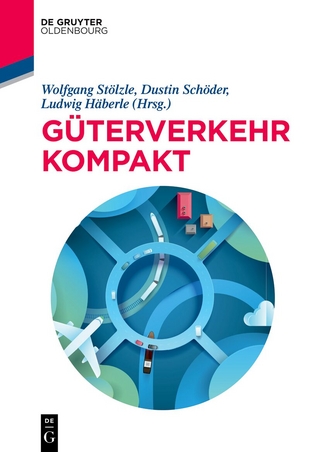
Driving the Enterprise to Sustainable Excellence
CRC Press (Verlag)
978-0-367-48401-9 (ISBN)
There are numerous discussions, conference talks, and webinars of why the Shingo process is beneficial, and what types of improvements can be achieved, but the crucial material has not been assembled in one concise book, giving the executive, manager, or supervisor an overview and understanding of what the Shingo experience entails. The main purpose of this book. It is for the executives who want to understand their role in supporting and leading middle management with its implementation. Many executives from developing countries all over the world are seeking a concise definition of what the Shingo model is, and this book functions as the perfect primer. Even those who have attended and implemented the lessons from the Shingo Institute's courses would find this book a benefit as it serves perfectly as backup and reference material. In addition, this book helps anyone who has started their journey with the Shingo model and may be confused about what to do and expect -- It gives them a vision of what the continuing journey will look like. The Shingo process is being taught at numerous universities and this book could indeed serve as the appropriate textbook or supplemental reading.
Essentially, this book teaches an innovative and extremely successful approach to continuous improvement, referred to as the Shingo process. It is based on a set of universally accepted principles that are endorsed by improvement leaders such as Covey and companies such as Toyota. This book is not a detailed review or a replacement of the Shingo workshops. It is an overview of the entire Shingo process, starting with a discussion of the challenges that many of todays enterprises are experiencing.
The author, in his role as a PhD in economics, has studied industries and has worked closely with many of them attempting to understand their weaknesses. This book builds upon an understanding of these weaknesses. The book discusses how the over-all Shingo methodology fits into these organizations and highlights the benefits. The next step is then to discuss what requirements are necessary for an organization to get ready for a Shingo transformation. What are the steps that the organization needs to go through, and when will it know that it is ready to begin? The book briefly reviews the Shingo Insights and Principles and explains how the Shingo courses should be best utilized to facilitate the desired transformation. It suggests some alternative plans for over-all implementation based on the current state of the enterprise. It explains why there is no “one way” for successful implementation and how the implementation sequence needs to be customized. It also discusses the length of time needed for success and how this differs depending on the current enterprise environment.
Lastly the book explains how the implementation and Shingo training is never finished. It is an on-going process and success is defined by internal improvements, not by some arbitrary external benchmark. The book is intended to be educational, thought provoking, entertaining in its stories and examples, and a guideline towards the development of a plan for continuous improvement. This book is filled with stories and examples, showing successful and not so successful implementations. The stories are used to highlight many of the pitfalls that have arisen and may arise for you and which can be avoided if the reader is aware of them and knows how to watch for them.
Dr. Gerhard Plenert, former Director of Executive Education at the Shingo Institute, has more than 25 years of professional experience in organizational transformations helping companies and government agencies strive for enterprise excellence by utilizing the Shingo Model to drive cultural transformations. Dr. Plenert is an internationally recognized expert in supply chain management; Lean/Six Sigma; IT, quality and productivity tools; and in working with leading-edge planning and scheduling methods. He has literally “written the book” on leading-edge supply chain management concepts, such as finite capacity scheduling, advanced planning and scheduling, and world-class management. His experience includes significant initiatives with Genentech, Johnson & Johnson, Aerojet Rocketdyne, Shell, Aramco, Sony, Cisco, Microsoft, Seagate, NCR Corporation, Ritz-Carlton, the US Air Force, and numerous other branches of the US Department of Defense. In addition, Dr. Plenert has consulted to major manufacturing and distribution companies such as Hewlett-Packard, Black & Decker, Raytheon, Motorola, Applied Magnetics, Toyota, AT&T, IBM, and Kraft Foods. He has also been considered a corporate “guru” on supply chain management for Wipro, AMS, and Infosys, and a Lean/Six Sigma “guru” for the US Air Force and various consulting companies. With 14 years of academic experience, Dr. Plenert has published over 150 articles and 22 books on Lean, supply chain strategy, operations management and planning. He has also written MBA textbooks and operations planning books for the United Nations. Dr. Plenert’s ideas and publications have been endorsed by people like Steven Covey and companies such as Motorola, AT&T, Black & Decker, and FedEx. His publications are viewable at www.gerhardplenert.com. Dr. Plenert previously served as a tenured full professor at California State University, Chico; a professor at BYU, BYU–Hawaii, University of Malaysia, University of San Diego; and has been a visiting professor at numerous universities all over the world. He earned degrees in math, physics, and German; and he holds an MBA, MA in international studies, and PhD in resource economics (oil and gas) and operations management. Dr. Plenert continues to serve as a Shingo examiner. He has published 22 books which you can see at www.gerhardplenert.com
Introduction About the Author Acknowledgements Part I The Growth of the Shingo Approach Chapter 1 A Personal Experience Chapter 2 Who is Shigeo Shingo? Chapter 3 What is the Shingo Institute and the Shingo Prize? Part II The Shingo Methodology Chapter 4 Integrating the Shingo Methodology Chapter 5 Systems Chapter 6 Metrics Chapter 7 Guiding Principles Chapter 8 Tools Chapter 9 Results Chapter 10 Culture Part III Bringing it Home Chapter 11 Making it Actionable Chapter 12 Maintaining the Momentum Chapter 13 Sustainable Enterprise Excellence
| Erscheinungsdatum | 24.02.2021 |
|---|---|
| Zusatzinfo | 70 Illustrations, black and white |
| Verlagsort | London |
| Sprache | englisch |
| Maße | 156 x 234 mm |
| Gewicht | 453 g |
| Themenwelt | Technik ► Umwelttechnik / Biotechnologie |
| Wirtschaft ► Betriebswirtschaft / Management ► Logistik / Produktion | |
| Wirtschaft ► Betriebswirtschaft / Management ► Unternehmensführung / Management | |
| Wirtschaft ► Volkswirtschaftslehre | |
| ISBN-10 | 0-367-48401-3 / 0367484013 |
| ISBN-13 | 978-0-367-48401-9 / 9780367484019 |
| Zustand | Neuware |
| Haben Sie eine Frage zum Produkt? |
aus dem Bereich


